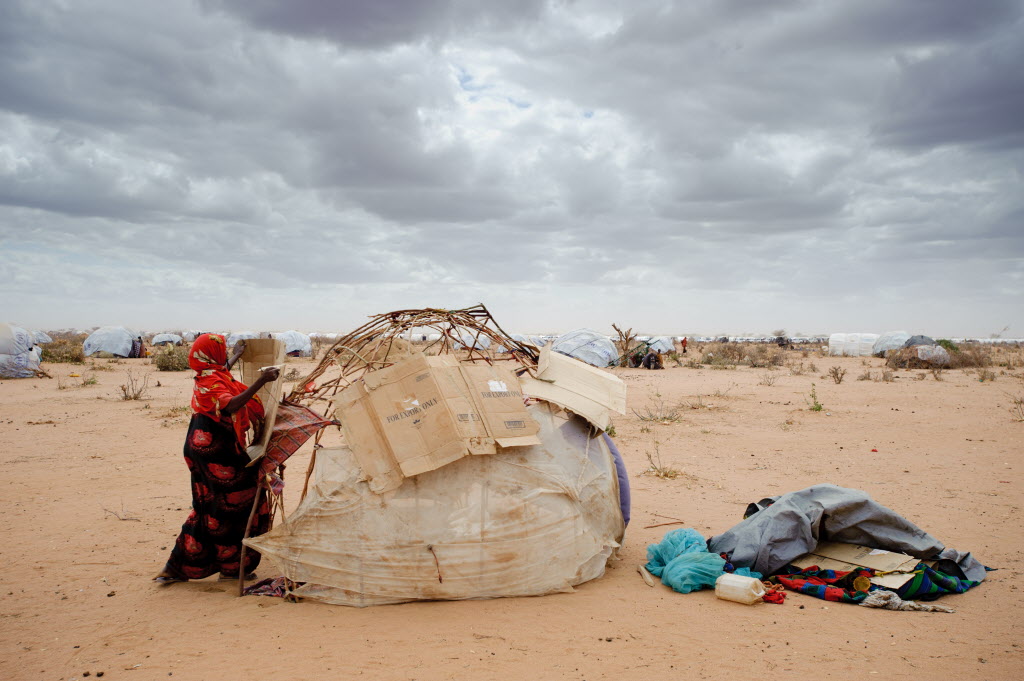
NAIROBI (June 20, 2016) — As the world marks World Refugee Day, major global events are set to tax already-stretched-thin humanitarian resources, and this could lead to especially harmful impacts on children, warns World Vision.
The closure of the world’s largest refugee camp, an ever-worsening crisis in Syria, and ongoing conflicts like South Sudan mean the number of displaced people around the world is likely to increase. This would add even more pressure on structures for humanitarian response, which are already facing unprecedented demand and inadequate funding.
“The pressures on very vulnerable people to migrate from extreme hardship and conflict are, if anything worsening. We urgently need to do much more to help refugees – and especially children – by courageously addressing the underlying causes that lead to mass movements of people,” warned Francois Batalingaya, director of humanitarian operations for World Vision International.
Currently the world faces its highest number of displaced people ever, more than even following World War II, due in part to ongoing conflicts like the Syria crisis. In Syria, 13.5 million people are in need of humanitarian assistance, half of whom are children.
In Kenya’s Dadaab camp, the forthcoming shuttering will force 327,000 Somalis – 192,000 of them children – into an uncertain future. Many will be returning to their homelands just as the threat of drought and hunger continues to loom large. Right now within Somalia more than1 million people are internally displaced and nearly 2 million people are affected by the severe drought.
“The Kenyan government, like Middle Eastern governments responding to the Syrian refugee crisis, have been struggling to meet the needs of hundreds of thousands of people in need. It’s time for the world to accept the refugee challenge won’t go away.”
“We must collectively do more to address the root causes driving displacement and ensure refugees are not marginalized, or left unproductive for years. Children must be given education. Adults must have work opportunities. These things restore dignity and reduce reliance on expensive and unsustainable aid hand-outs,” said Margaret Schuler. World Vision’s regional director for East Africa.
The proposed closure by November of the Dadaab camp – where World Vision runs operations to feed more than 125,000 – exemplifies the challenges facing refugees the world over. The camp is 24 years old. Tens of thousands of refugees were born there, cannot leave without special permission nor secure work permits, and have little or nothing to go back to in Somalia. There is little secondary education available in the camp and primary education lacks quality teachers and resources.
To address the unprecedented humanitarian need globally, World Vision is calling for the rapid implementation by governments and humanitarian players of recent commitments made at the World Humanitarian Summit. These include doing much more to:
- Ensure no child misses out on education by guaranteeing schooling for all – and funding it
- Permit refugees to work within host communities and provide business support so they can look after themselves and their families
- Support countries prone to conflict, chaos and crises with flexible response mechanisms built into long-term development programming and financing that builds resilience and adaptive capacity at the local level
- Proactively find political solutions to prevent and end conflict, which drives 80 percent of humanitarian need globally
– END –
About World Vision:
World Vision is a Christian humanitarian organization conducting relief, development, and advocacy activities in its work with children, families, and their communities in nearly 100 countries to help them reach their full potential by tackling the causes of poverty and injustice. World Vision serves all people regardless of religion, race, ethnicity, or gender. For more information, please visit www.WorldVision.org/media-center/ or on Twitter @WorldVisionUSA.